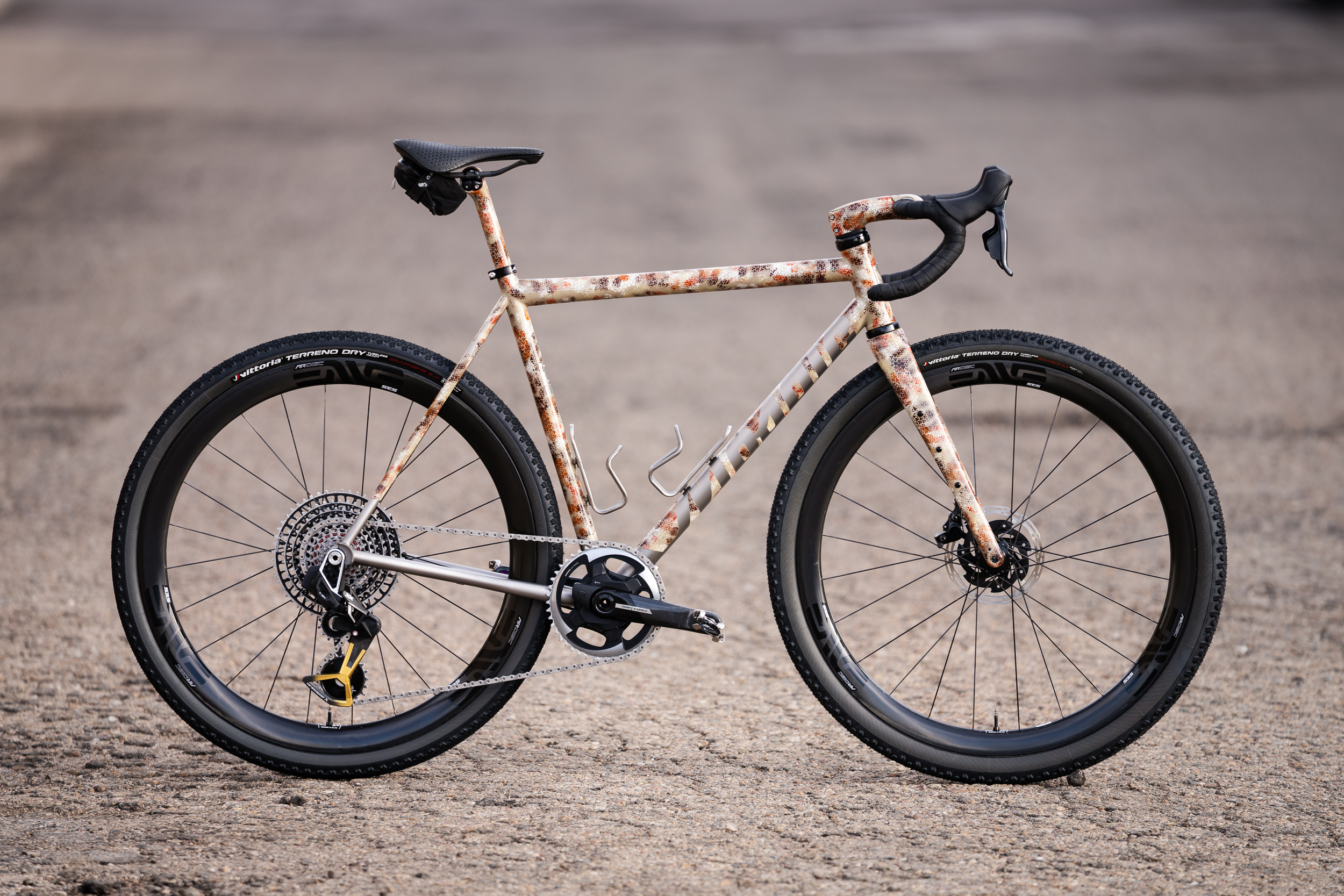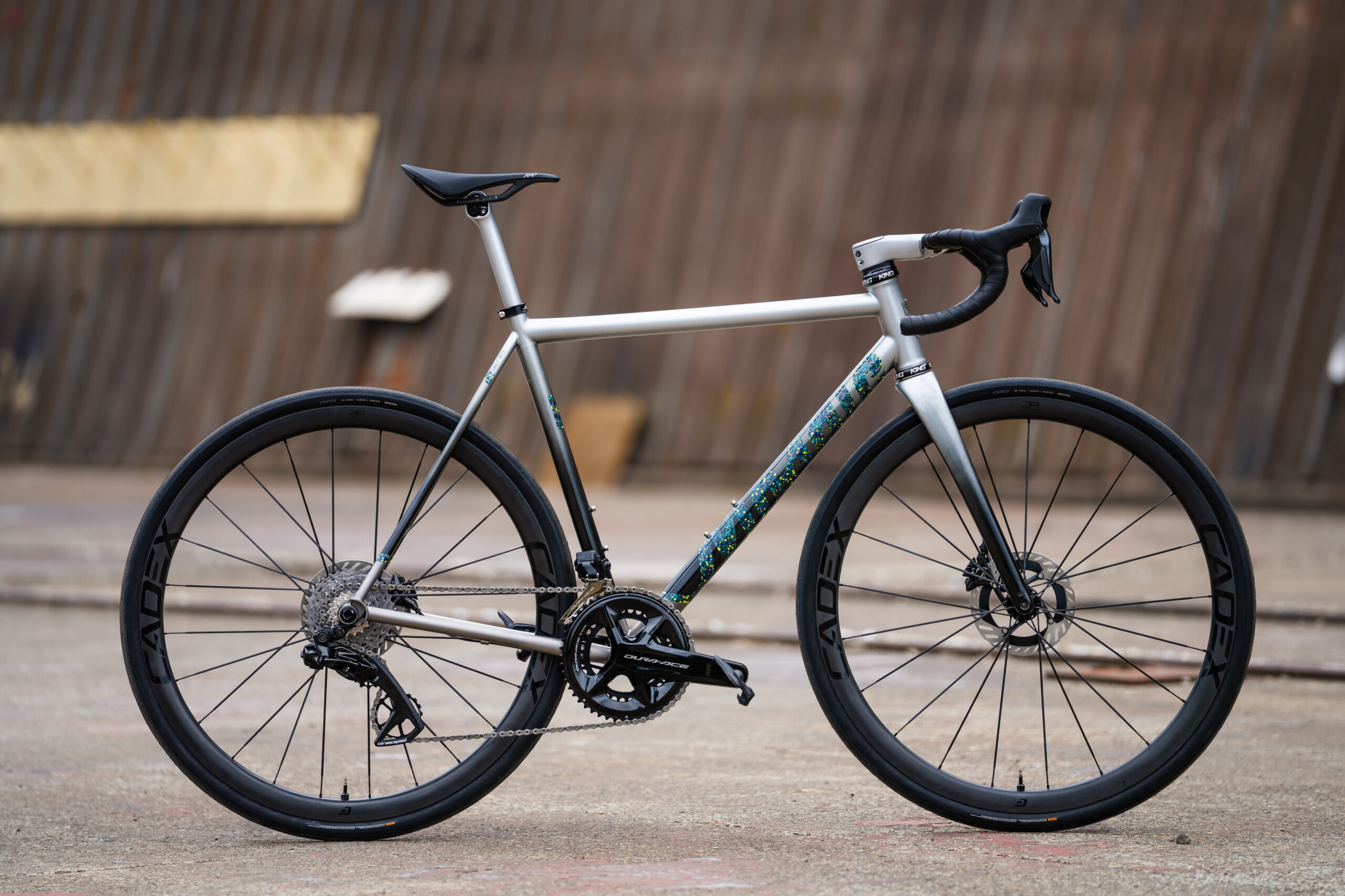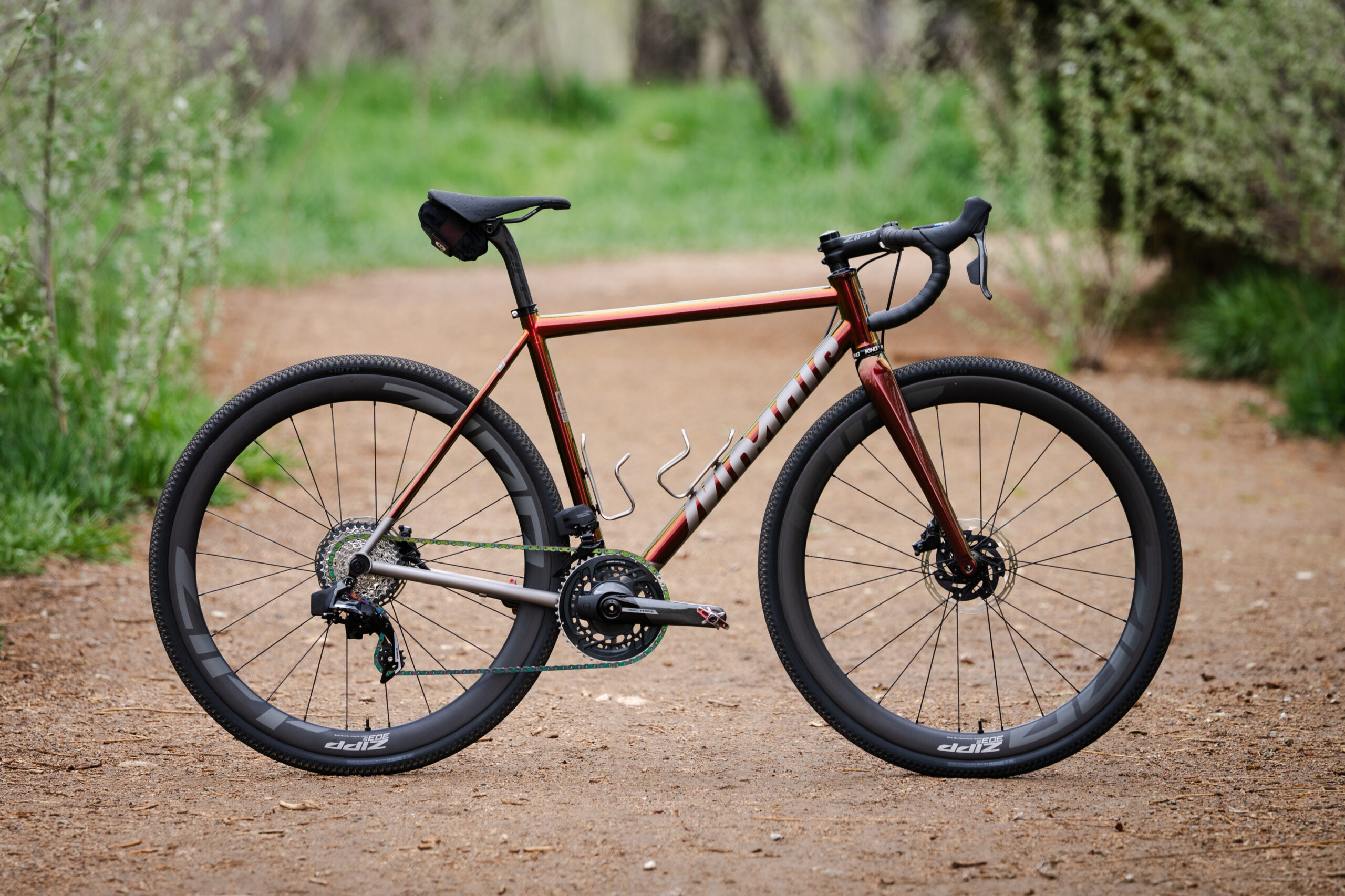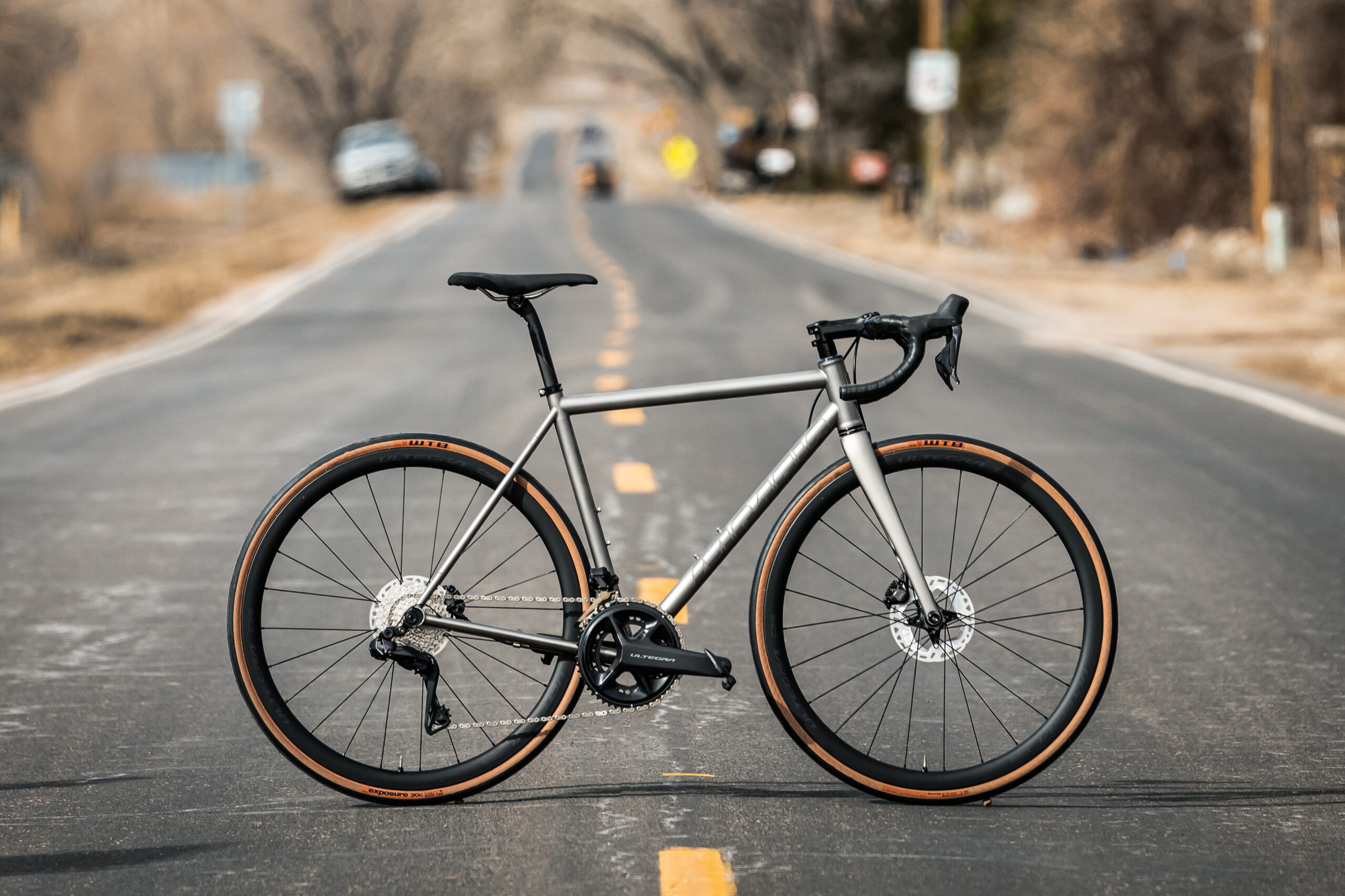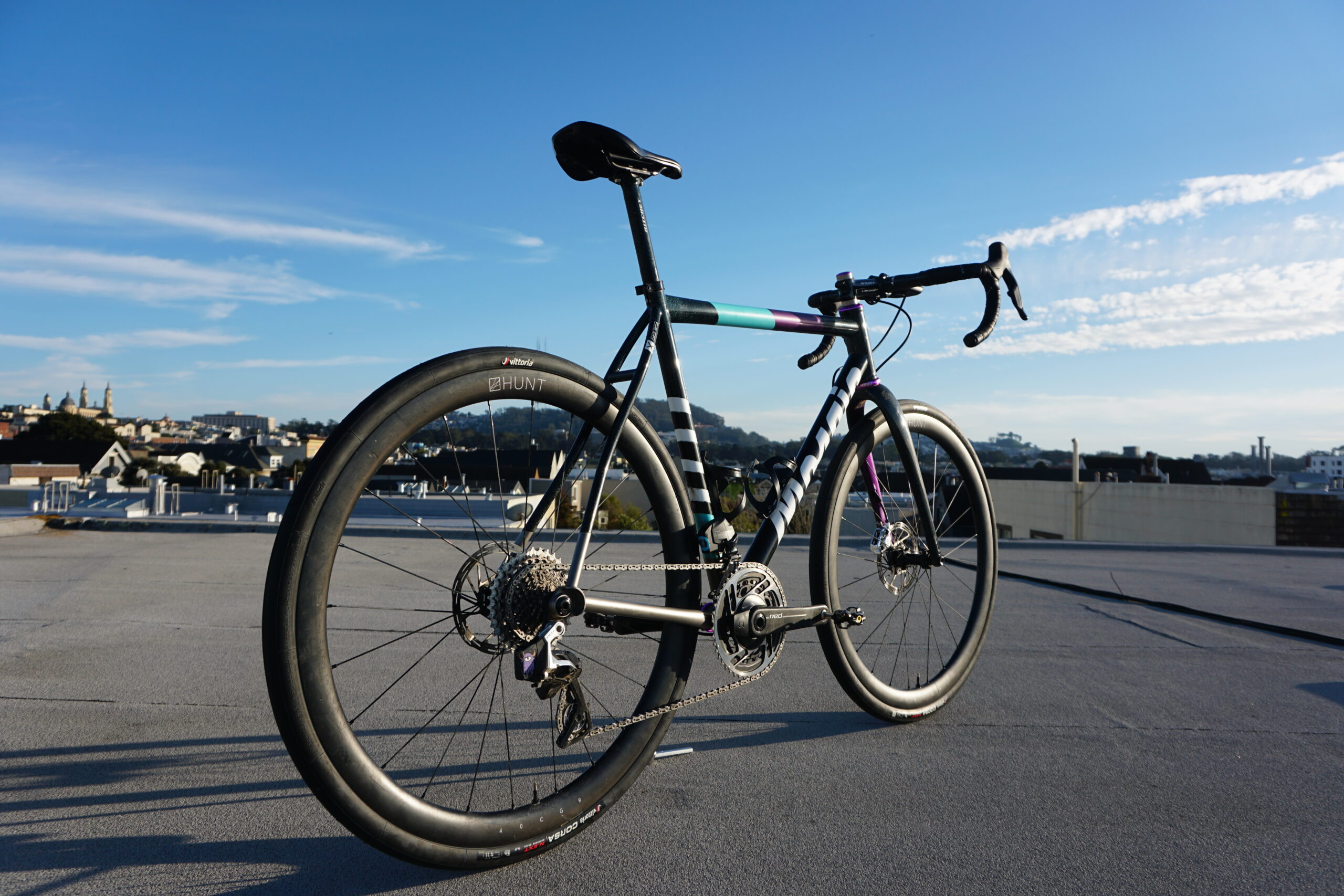When it comes to handbuilt bicycles, the sheer number of customization options—model, tubing, size, geometry and paint—can be overwhelming. But what if you could get a handmade titanium frame with proven geometry, dialed-in handling, and a simplified ordering process, all while saving time and money? That’s exactly why we created the Mosaic Batch Built program.
Designed for riders who don’t require fully custom geometry, our Batch Built frames deliver the same quality craftsmanship and refined ride quality as our Made to Order models but with a more efficient build process. This means you can get a premium American-made titanium frame, built in our Boulder, Colorado shop, in as little as a few weeks.
Why Choose a Mosaic Batch Built Frame?
- Effortless Ordering – No need to spend time fine-tuning geometry with a fitter. Choose your frame size (48cm–62cm for road/gravel models; S–XL for mountain), and you’re set.
- Handbuilt on a Budget – You get the same meticulous attention to detail as our custom frames at a lower price point—$4,750, including a Columbus carbon fiber fork for road and gravel models, Cane Creek headset, and raw finish.
- Personalized Touch – While Batch Built frames start with our standard raw finish, you can choose from a full range of custom paint options to make it truly yours. Additionally, frames can be configured for any shifting system, whether mechanical, electronic, or wireless.
Meet the Mosaic Batch Built Lineup
We currently offer four Batch Built models, each designed with specific riding styles in mind.
RT-2d: Pure Road Efficiency
If the joy of smooth pavement and endless miles fuels your rides, the Mosaic RT-2d is your perfect match. With clearance for 30mm tires, this modern road bike balances efficiency, comfort, and traction. A 71-73-degree head tube angle and two unique fork rake options (size-dependent) ensure sharp and predictable handling for spirited road rides.
- Size Range: 50-62cm
- Straight-Gauge Size-Specific Titanium Tubing
- 30mm Tire Clearance w/ Road Chainline
GT-2 AR: All-Road Versatility
Built for riders who mix pavement with dirt, the GT-2 AR is the ideal companion for varied terrain. With clearance for 38mm tires, it’s quick on the road and confident on unpaved stretches. A 71-73 degree head tube angle (again, size specific) offers stable yet responsive handling, perfect for everyday adventure rides.
- Size Range: 50-60cm
- Straight-Gauge Size-Specific Titanium Tubing
- 38mm Tire Clearance w/ Road Chainline
GT-2 45: Gravel without Limits
For those who push the limits of gravel riding, the GT-2 45 is up for any challenge. With room for 45mm tires and a more relaxed head tube angle, this frame provides a confident, comfortable ride for long days on mixed-to-rough surfaces. It’s a race-proven design that’s been battle tested at Unbound, SBT GRVL and other top tier events.
- Size Range: 48-60cm
- Straight-Gauge Size-Specific Titanium Tubing
- 45mm Tire Clearance w/ Gravel Chainline
MT-2: Batch Built Hardtail
Rounding out the lineup is the MT-2, a titanium hardtail built for fast and fun trail riding, XC racing and everything in between. With Batch Built geometry, a stock size run from S-XL, and two cabling configurations—external full-length shift/brake and internal dropper routing or eTap AXS with a dropper port—it’s a true do-it-all mountain bike.
- Size Range: S-XL
- Straight-Gauge Size-Specific Titanium Tubing
- Fits up to 29 x 2.4 tires
- Designed for 120mm forks
- Configurable Cabling Options
The Mosaic Process – How Our Batch Built Frames are Made
While Batch Built frames offer streamlined ordering and shorter wait times, they undergo the same meticulous handbuilt process as our Made to Order frames. Here’s how we ensure precision, quality, and durability:
- Chain Stay Prep – Each model has a consistent chain stay length across all sizes, allowing us to cut and weld dropouts, chain stays, and bottom brackets in large, well, batches.

- Tube Prep – Various diameters and butting profiles for seat tubes, down tubes, and top tubes are prepared with bottle cage bosses, internal brake routing, and reinforcements for electronic shifting ports.

- Fixture Set-Up – Using the world’s finest frame jigs (Sputnik Tool and Anvil), we ensure each frame maintains consistent stack, reach, and angles.

- Cutting & Mitering – Tubes are precisely cut and mitered to fit seamlessly together, guaranteeing a perfectly aligned frame throughout the assembly process.
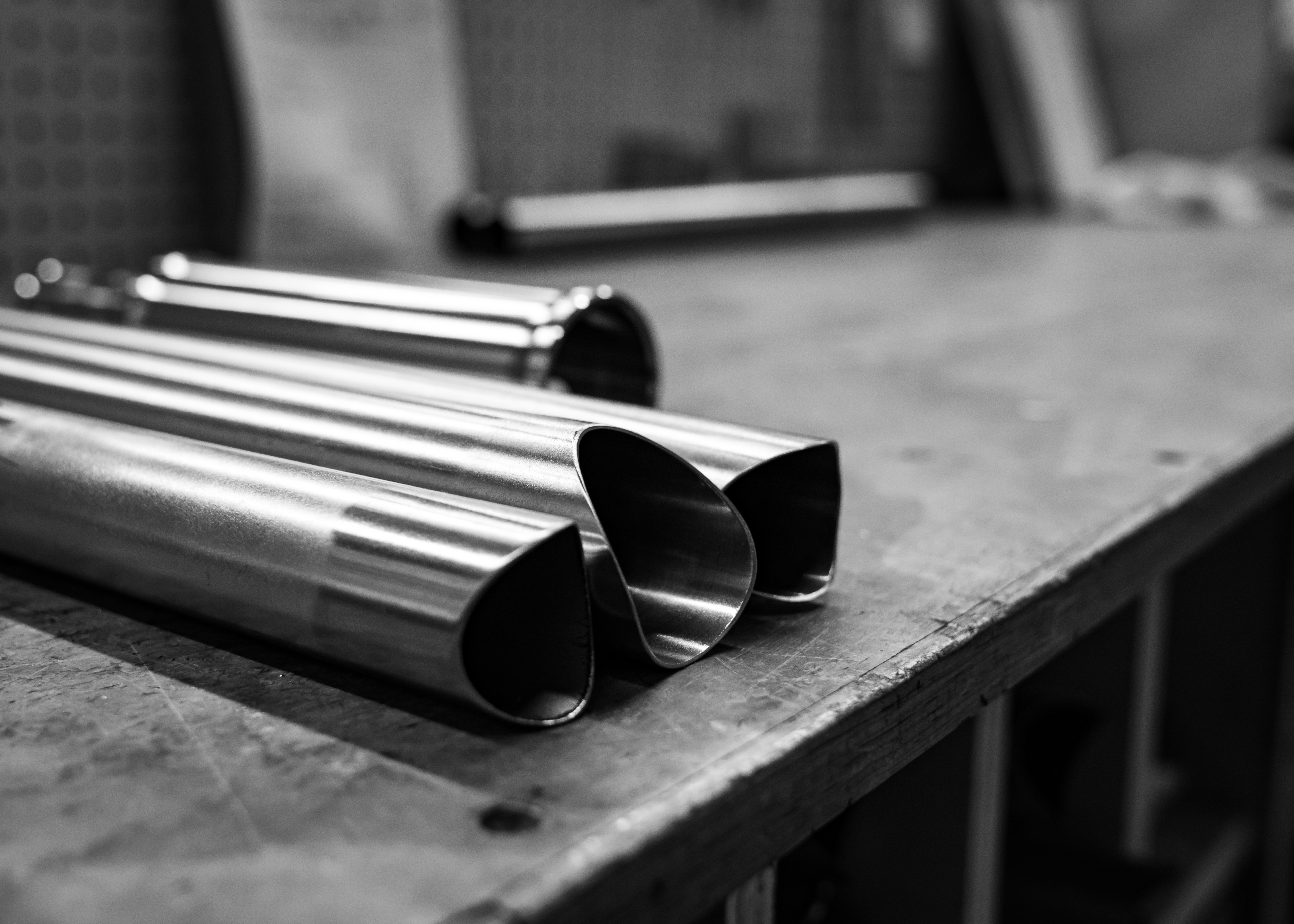
- Frame Build – Tubes are tack-welded in the jig before moving to our welding booth for final assembly. Alignment is checked at many stages of the process, starting here.

- Welding – Our expert welders lay down flawless, stacked-dime double-pass welds that give Mosaic frames their signature strength and finish.

- Quality Control – Every frame undergoes the same rigorous multi-step inspection process as our Made to Order frames to ensure perfect alignment, geometry, and finish before shipping off to a Mosaic Dealer.

Quick Turnaround. Maximum value. Zero Compromise.
Unlike full custom frames that take 6-8 weeks from start to finish, Mosaic Batch Built frames are completed in as little as 2 weeks, depending on your finish selection. If you opt for a painted finish, expect a lead time of 2-3 weeks. And, because the Batch Built program streamlines our workshop efficiency, our Made to Order frames now have a faster turnaround time of just 6-8 weeks.
Which Mosaic Is Right for You?
If you’re looking for the sublimely balanced and lively ride and unbeatable durability of a high-quality, handbuilt titanium bike with tried-and-true geometry, quicker delivery, and a lower cost, a Batch Built Mosaic is an excellent choice.
But if you’re excited about customized geometry based on a favorite bike or a pro bike fit, or the added weight savings and resilience of our premium butted titanium tubing, our Made to Order program is the path to creating your dream ride.
No matter which Mosaic you choose—Batch Built or Made to Order—you’re getting a handcrafted titanium frame, built with precision and passion, right here in Colorado.
